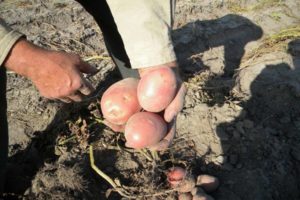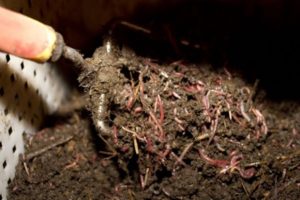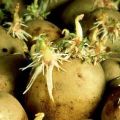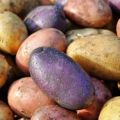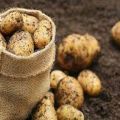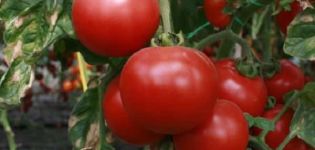Description of the Krasavchik potato variety, features of cultivation and care
In order for the potato crop to please both in quantity and quality, you need to familiarize yourself with the whole variety of varieties and choose a suitable one suitable for growing in a given area. It is worth taking a closer look at the Krasavchik potatoes, as many liked them. Breeders brought him out of Russia, however, he also found his fans in Moldova and Ukraine.
Description of the variety
Potatoes of this variety are very popular among gardeners. The bushes of this type of vegetable are low, spreading. Leaves are medium-sized, green, oval. This variety blooms with white inflorescences with a slight blue tint. Handsome potatoes can be classified as medium early. From planting to the moment of ripening of the first young potatoes from 60 to 80 days.
Characteristics of this type of potato: starch contains from 12.4 to 17.8%, and the average weight of one potato is from 100 to 170 grams. From one hectare of arable land, an average of 170 to 210 centners of such potatoes are harvested. It tolerates drought and various defects quite easily. Has a fairly high resistance to disease.
This potato variety possesses excellent taste, as a result of which it has a mass of fans in various countries. The Krasavchik potato has beautiful, even oval tubers, covered with a reddish skin with small eyes. It has a creamy heart and is perfect for making mashed potatoes.
Growing
It is recommended to grow potatoes in those areas where they grew before:

- linen;
- leguminous plants;
- herbs.
For the better development of such potatoes, the Ph-acidity of the soil should be at the level of 5.0–5.5 units, and therefore, if necessary, it is worth liming the soil.
The tubers are planted at a distance of 30–40 cm from each other. The distance between the rows is 50-60 cm. The soil for planting is prepared in advance and allowed to warm up, and only then the potatoes are planted. If the ground is warm, then the sprouts will germinate faster and the formation of potato tubers will begin.
Watering Krasavchik potatoes should be done at the root, since irrigation of the tops does not make sense. During planting, it is recommended to add complex fertilizer to the holes. In order for the plant to gain green mass as soon as possible and begin to devote more energy to the formation of tubers, it is recommended to water it with special growth stimulants. They are absolutely safe for both the plant and the gardener.
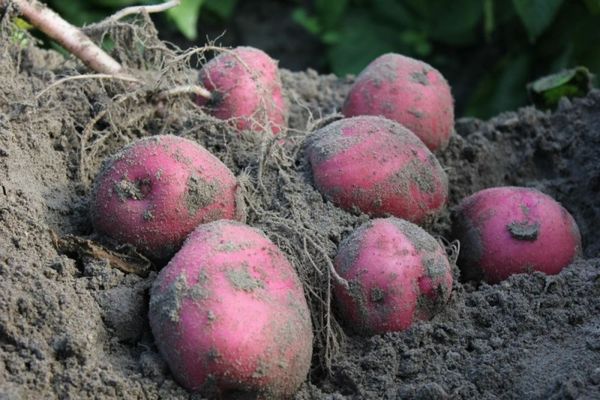
It is possible to plant Krasavchik potatoes on the same plot only with a break of three years.
Care features
It should be remembered that Handsome loves light, therefore, for planting, you should choose a site where the lighting is uniform throughout the entire territory and lasts longer.
Caring for Krasavchik potatoes has the same features as other varieties. The main actions when caring for these potatoes are:
- litter removal;
- hilling bushes;
- loosening the soil;
- feeding and watering.
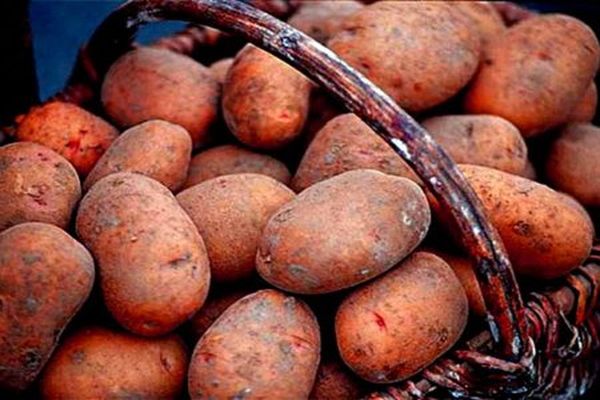
It is extremely important to carry out one feeding with mullein infusion at the rate of 1-2 liters for each bush. When the potatoes have faded, you need to apply phosphorus fertilizers.
Advantages and disadvantages of the variety
The positive qualities include the following:
- unpretentious to the soil on which it will be grown;
- has a unique taste;
- suitable for any dishes;
- excellent presentation;
- high keeping quality;
- relative resistance to the most common diseases.

The only significant flaw is the instability to the golden cyst nematode, which kills a huge number of potato tubers of this variety.
Pests and diseases
This variety is resistant to cancer, a dangerous disease of potatoes that manifests itself in the form of banded and wrinkled mosaics. It is moderately susceptible to late blight on the tops, while this attack is harmless to tubers.
The presented potato variety is very sensitive to the golden cyst nematode. Signs by which you can determine that there is this pest on the site:
- the appearance in the garden of plots with drying out bushes;
- curvature of the stems;
- weak flowering or its complete absence;
- the roots turn brown;
- premature death of bushes and too small size of tubers.
An infusion of potato sprouts, mullein and bird droppings will help to cope with this problem.
Harvesting and storage
The fact that soon it will be possible to start harvesting, you can find out from the following signs:
- The growth of the potato bush stops, and the tuber also stops growing.
- The dug up tubers fall off the bush by themselves.
- The tops wilt slightly, turn yellow, begin to lie down.
If the bushes are only grafted a little, then there are still a lot of useful substances in them and you have to wait until the tubers take them all. Therefore, you need to wait for the tops to dry better. In order not to lose the landmark, do not wait for it to dry completely, otherwise there will be many damaged potatoes during harvesting.

In those regions where the summer is short, the tops do not have time to dry, which means that the tubers do not ripen either, which means they cannot be stored for a long time. Therefore, when the air temperature reaches about +7 ° C, you should remove the tops and let the potatoes stand for another week.
Digging potatoes necessary in dry weather. After that, the tubers are dried, sorted and stored.
Stored in dark dry rooms:
- Trenches.
- Special pits.
- Cellars.
- In closed boxes on the balcony.
Potatoes infected with golden nematode should not be stored, but rather used immediately.
For better storage, it is necessary to reach the optimum temperature - not higher than + 3 ° С.
